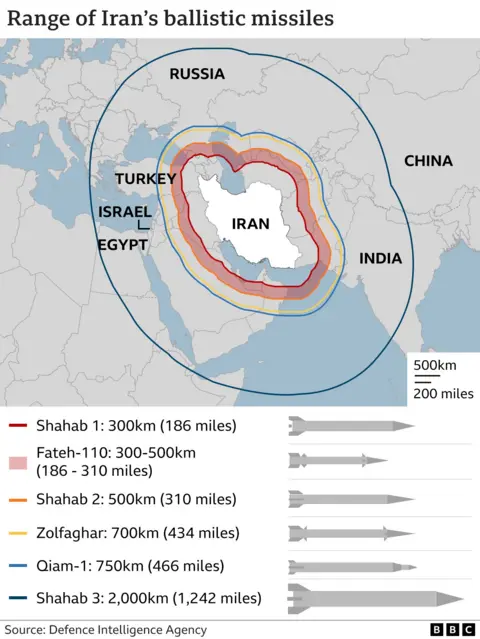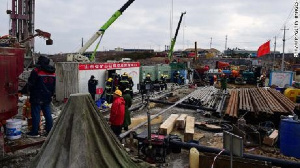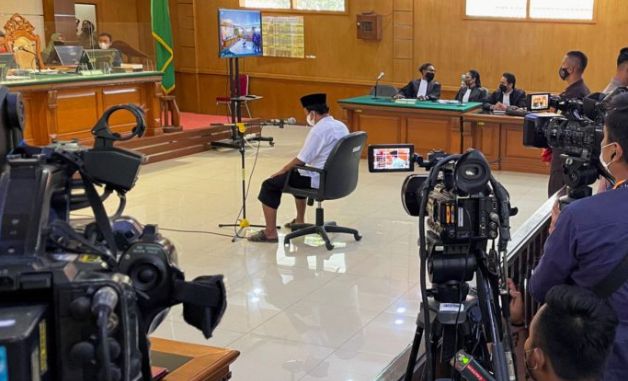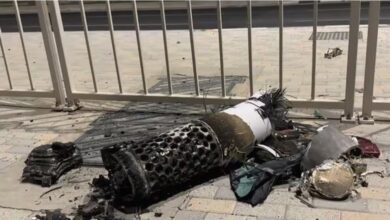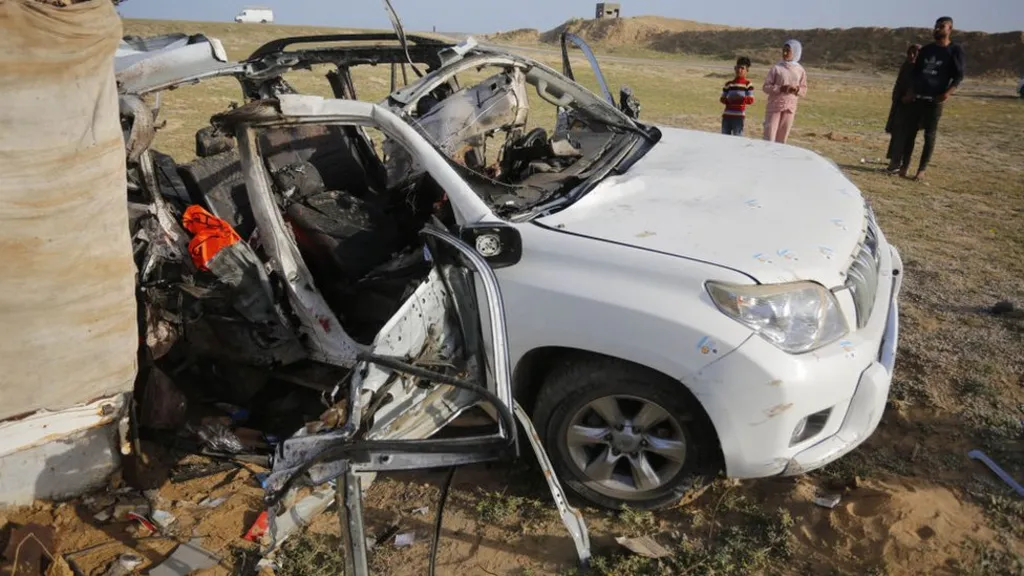What was in wave of Iranian attacks and how were they thwarted?
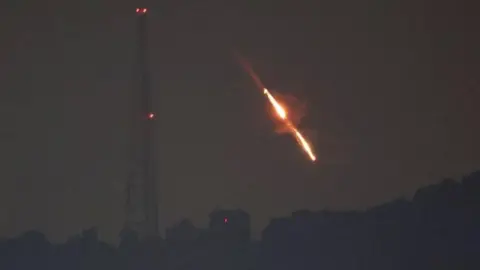
For the first time ever, Iran has carried out strikes against Israeli territory.
In the middle of Saturday night, air raid alerts went off in Israel. Residents were urged to seek shelter, while explosions were heard as air defences were activated.
Interceptions lit up the night sky in several places across the country, with many drones and missiles shot down by Israel and its allies before they reached Israeli territory.
There is even thought to be at least one case of a ballistic missile being shot down outside the Earth’s atmosphere.
At least nine countries were involved in the military escalation – with projectiles fired from Iran, Iraq, Syria and Yemen and downed by Israel, the US, the UK and Jordan.
Here’s what we know about what was fired at Israel and what was intercepted.
Attack involved drones, cruise missiles and ballistic missiles
Iran launched more than 300 drones and missiles towards Israel, the Israeli military said on Sunday.
The attack included 170 drones and 30 cruise missiles, none of which entered Israeli territory, and at least 110 ballistic missiles, of which a small number reached Israel, military spokesman Rear Adm Daniel Hagari said in a televised statement. The BBC has not independently verified those figures.
The shortest distance from Iran to Israel is about 1,000km (620 miles) across Iraq, Syria and Jordan.
Bombardment launched from several countries
On Saturday night, Iran’s Revolutionary Guards Corps (IRGC) said it had launched drones and missiles.
Iraqi security sources told Reuters that projectiles were seen flying over Iraq in the direction of Israel.
The IRGC said ballistic missiles were fired almost an hour after the slower-moving drones, so that they would strike Israel at roughly the same time.
The US defence department said US forces intercepted dozens of missiles and drones launched from Iran, Iraq, Syria and Yemen.
The Iran-backed Hezbollah group in Lebanon also said it had fired two barrages of rockets at an Israeli military base in the occupied Golan Heights, a plateau which Israel has annexed from Syria, in a move not recognised by most of the international community.
How Israeli defences dealt with the attack
Some 99% of the incoming barrage was intercepted either outside Israeli airspace or over the country itself, Rear Adm Hagari said.
They included all the drones and cruise missiles, which follow a flat trajectory, and most of the ballistic missiles, which are fired on an arcing trajectory that uses gravity to reach very high speeds.
Since most of the projectiles came from relatively far away, Israel was able to send F-35 stealth fighters to intercept them. The IDF said that 25 of the 30 cruise missiles sent by Iran were shot down outside the country.
For anything that got past this first line of defence, Israel used its Aerial Defense Array – the three-tier umbrella of missile defence systems in place since 7 October – apparently to good effect.
The highest tier is Arrow, used to physically intercept long-range projectiles. It is thought that Arrow dealt with most of the ballistic missiles aimed at Israel.
Dramatic footage which appears to show one of these missiles being shot down outside the Earth’s atmosphere suggests that Arrow 3 – the most advanced of these systems, using exoatmospheric hypersonic anti-ballistic missiles – was employed.
The next element in the tier, David’s Sling, would have been used to protect against short-range ballistic missiles, cruise missiles and drones, taking them out as far as 300km (186 miles) away.
Finally, the Iron Dome system – which is designed to intercept unguided rockets heading for residential areas – has recently been upgraded to deal with the threat from drones. However, the Israeli military said that none of the 170 drones fired by Iran and its proxies reached Israeli airspace.
How Israel’s allies helped
US President Joe Biden said US forces “helped Israel take down nearly all” drones and missiles launched by Iran on Sunday. In a statement, he said the US had moved aircraft and warships to the region before the unprecedented attack.
Two aircraft and two destroyers were involved in intercepting the barrage. The destroyers deployed the Aegis missile defence system to shoot down at least three ballistic missiles, according to CNN.
US Central Command (Centcom) said its forces had destroyed more than 80 drones and at least six ballistic missiles.
Among these were a ballistic missile on its launcher vehicle and seven drones, which were destroyed on the ground in Houthi-controlled areas of Yemen before they were launched.
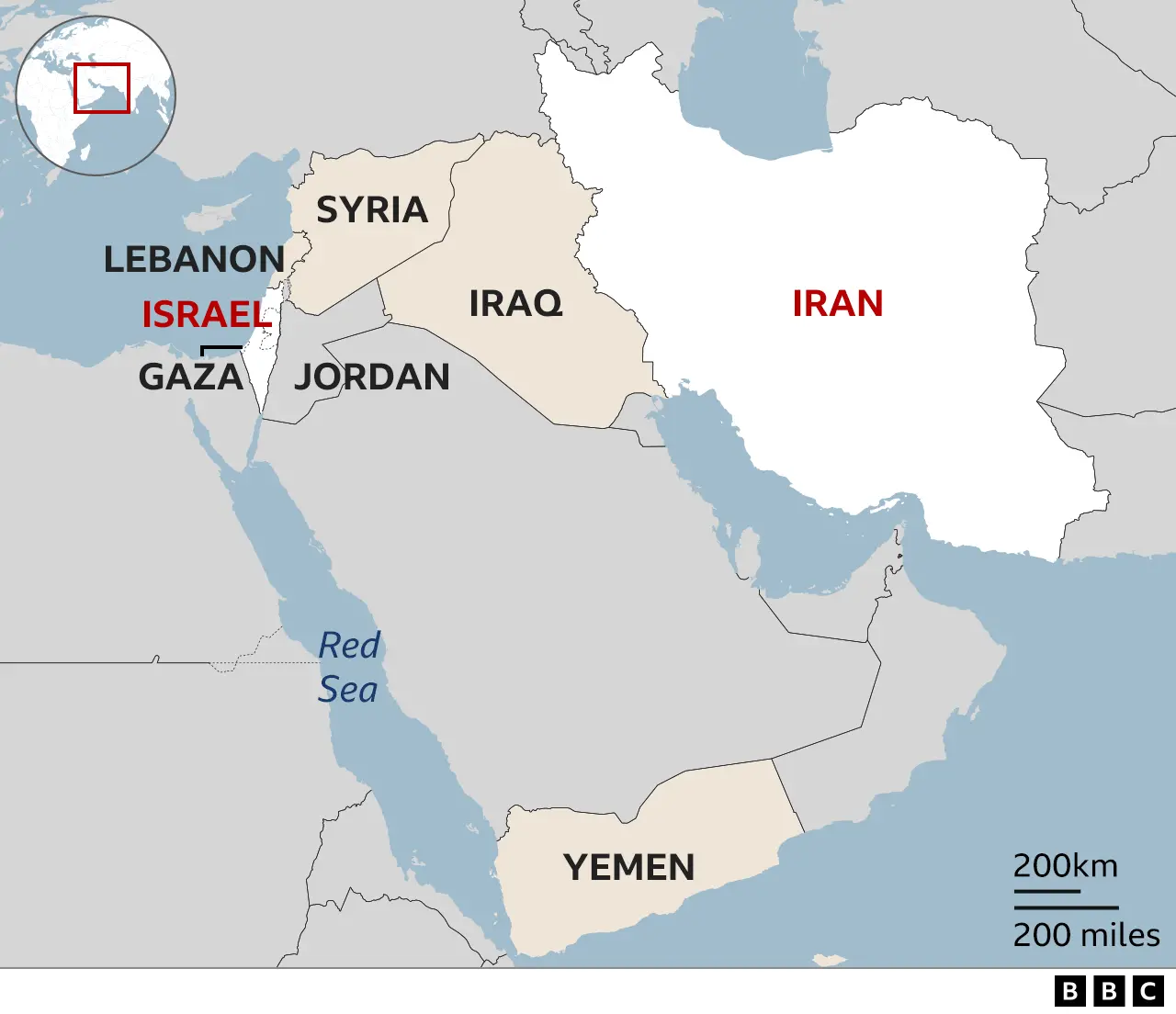
Operating from undisclosed bases in the region, US forces shot down a number of Iranian drones over southern Syria near the border with Jordan, security sources told Reuters.
However, former Israeli National Security Council head Giora Eiland told the Financial Times that the biggest US contribution to the defensive operation was intelligence, which he described as “extremely precise”.
And he said that a complex command and control system set up between the US, Israel and Arab neighbours more than four years ago had been effective in detecting and dealing with the threats.
UK Prime Minister Rishi Sunak has confirmed that UK RAF Typhoon jets also shot down a number of Iranian attack drones. Mr Sunak said the Iranian attack was a “dangerous and unnecessary escalation which I’ve condemned in strongest terms”.
Jordan – which has a peace treaty with Israel, but has been highly critical of the way it has carried out its war against the Palestinian group Hamas in Gaza – also intercepted flying objects that entered its airspace to secure the safety of its citizens, a Jordanian cabinet statement said.
Mr Eiland said Jordan had advanced radar systems and air-to-air missiles, adding that its F-16 pilots had shown that they could operate effectively at night.
France helped to patrol airspace, but it was unclear if it had shot down any drones or missiles, the Israeli military said.
How many missiles got through and what damage did they cause?
In Jerusalem, BBC correspondents reported hearing sirens and seeing Israel’s missile defence systems in operation.
A few of the ballistic missiles got through and struck Israeli territory, Rear Adm Hagari said.
One of them “lightly hit” the Nevatim air force base in the Negev desert in southern Israel. Rear Adm Hagari said the base was “still functioning”.
Two US officials told the BBC’s US partner CBS news that five ballistic missiles evaded air defences and impacted on Israeli territory.
Four landed in the base – where the country’s F-35 fighter jets are based – which the officials said was Iran’s primary target.
One missile hit a runway, another hit an empty aircraft hangar and one hit a hangar that was out of use. A fifth ballistic missile seemed to be aimed at a radar site in northern Israel, but missed its target.
Of the 120 ballistic missiles fired by Iran, about half of them failed on launch or crashed mid-flight, one of the officials told CBS.
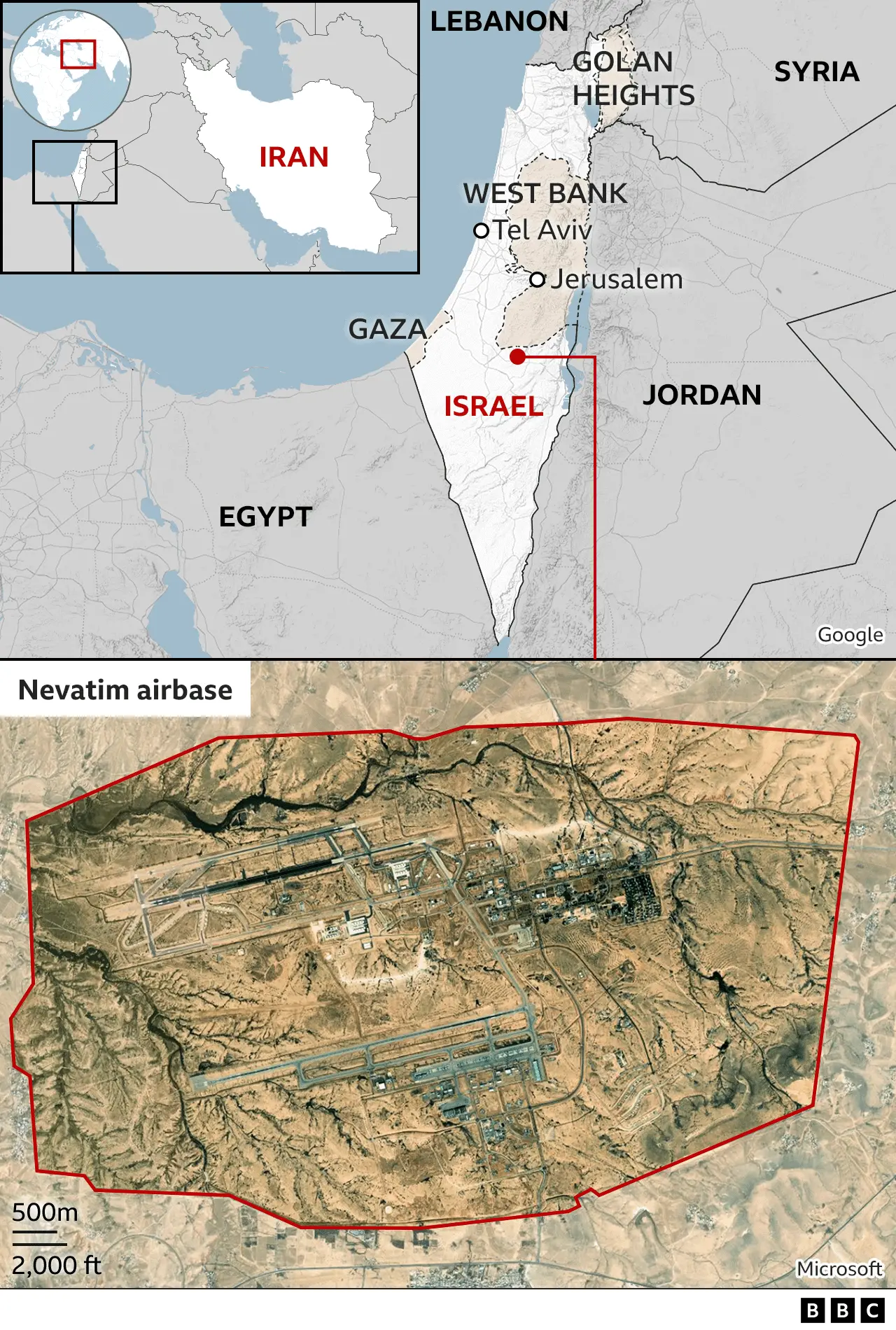
Iran’s official IRNA news agency said the attack had dealt “heavy blows” to the air base.
A seven-year-old girl was severely injured by shrapnel, Rear Adm Hagari said. The girl from a Bedouin Arab community near the southern town of Arad, was reported to have been injured after an Iranian drone was intercepted overhead. She was placed in intensive care.
Jordan also said that some shrapnel had fallen on its territory “without causing any significant damage or any injuries to citizens”.
What happens now?
Israel’s Channel 12 TV cited an unnamed Israeli official as saying there would be a “significant response” to the attack.
The country’s war cabinet is due to meet again on Monday to discuss options.
Israeli airspace has been reopened, as has that of neighbouring countries, but Defence Minister Yoav Gallant said the confrontation with Iran was “not over yet”.
Meanwhile, Iran has warned Israel its response “will be much larger than tonight’s military action if Israel retaliates against Iran”, armed forces chief of staff Maj Gen Mohammad Bagheri told state TV.
He said US bases would also be attacked if the US took part in any Israeli retaliation.
IRGC commander Hossein Salami also said Tehran would retaliate against any Israeli attack on its interests, officials or citizens.
But Foreign Ministry spokesman Nasser Kanani said Iran’s strikes were a limited act of self-defence and said Western countries should appreciate Tehran’s “restraint”.
At an emergency meeting of the UN Security Council on Sunday, Secretary-General Antonio Guterres called on both sides to “defuse and de-escalate”, as the region was on the brink of war.
G7 leaders meeting by video conference on Sunday called for restraint and condemned Iran’s attacks.
Additional reporting by Robert Greenall
